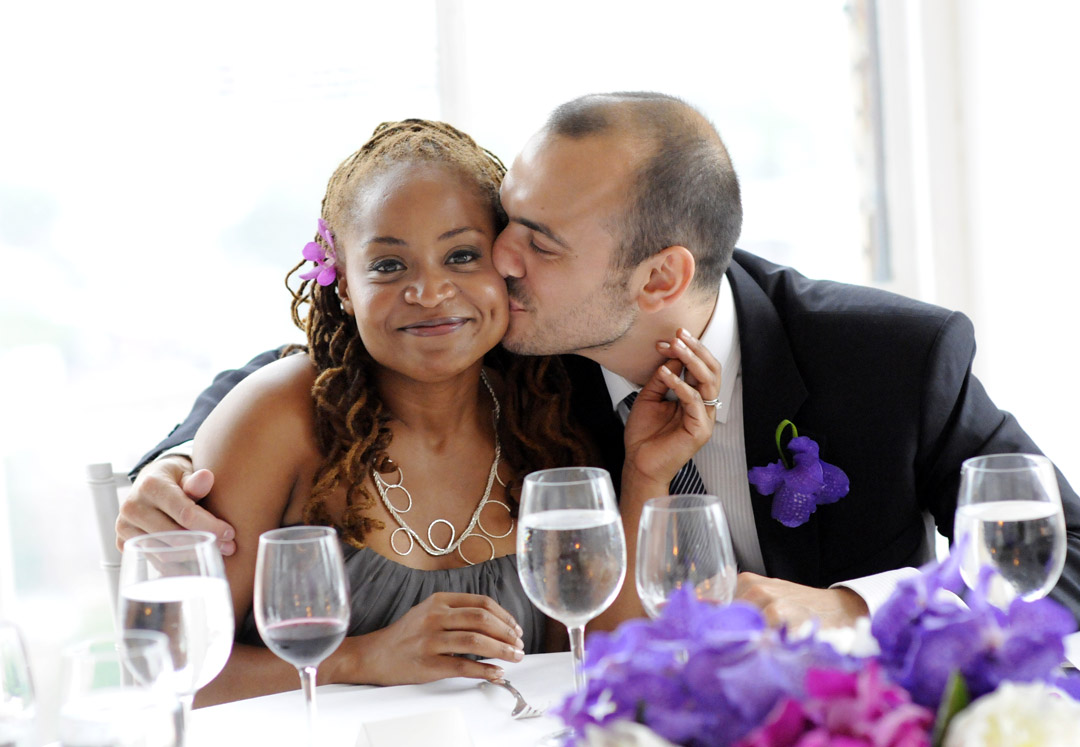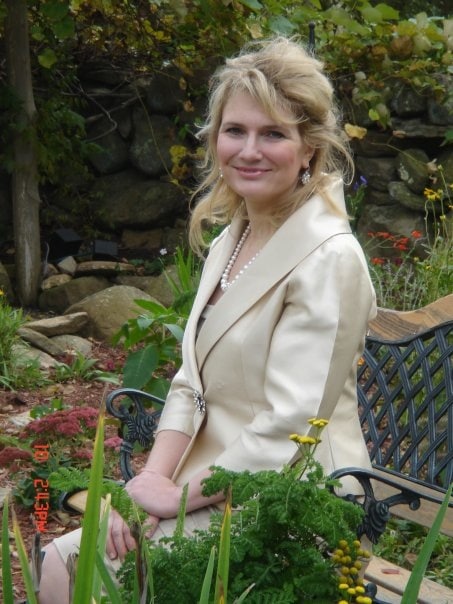
Most of my clients have been to a good number of weddings, both religious and secular, by the time that they marry. However, they generally can’t remember much about the ceremony. Sometimes a bride and groom can point to ceremony components they found off-but there isn’t much recollection beyond that. Likewise, while there is a vague sense of the flow of the ceremony, couples can’t remember much about the particular parts—all of this creates anxiety. So I have prepared a little cheat sheet that describes the basic outline of the ceremony. There are certain parts (the vows and ring vows, for example) that tend to be fixed, but rituals and readings can certainly be shifted about. Just remember, working with a wedding officiant, like me, you will have many opportunities to customize and add to this ceremony to make a perfect ceremony for you!
Processional. The most common format is the bride walking down the aisle with her father. Sometimes she is escorted by both her father and mother. From time-to-time, the bride processes on her own (or possibly with another male or female relative). Based on the bride’s preferences, the question is asked, “Who gives this woman in marriage,” to which the answer is, “Her mother and I do.” There are several ways that the groom may process. Often the groom and his groomsmen will come to the altar area from a side entrance or side aisle. Alternatively, the groom may wait at the front, while the groomsmen escort the bridesmaids down the aisle. He may also enter with his parents, processing down the aisle.
Welcome: This is basically where I welcome everyone and begin to set the stage and mood for the ceremony. This will be the place where you can thank particular guests—parents, siblings and what not. Some couples also choose to mention people who could not make the trip and/or people who have passed away. (Couples may pause here and perform some ritual to commemorate deceased loved ones, such as a candle lighting.)
Your Story. This will be drawn from the survey that you are fill out. Couples vary in terms of how much (or how little) of this they want to include in the ceremony. I find that the mix of funny and light (the first date, for instance) with the more serious parts of the ceremony (your words of love and appreciation to each other) creates a great deal of intimacy among the guests. The narrative is usually four or five paragraphs (that isn’t as long as it sounds!)
About Marriage: This is the time that we start moving into the heart of the ceremony, the exchange of vows. I normally include a few specific remarks about the intention of marriage (no worries, this isn’t long or “preachy”!) A reading is very good here as well. In the draft that I will send, I will include a popular reading, to maintain the flow of the ceremony script. If you have a favorite reading, poet, topic, period, you can let me know.
Declaration of Intent: There are three sets of vows during a standard, relatively formal ceremony. The first little set is called the “Declaration of Intent.” This is usually about four lines long where I am asking–is this what you really want to do . It is something like, “Do you, Bride, choose Groom to be your beloved Husband, etc.etc.” You answer with a simple “I Do.”
Reading/Ritual: You can go straight from the declaration of intent into the longer vows. However, if you wish to have any ritual, reading, etc. this is a superb place to do so–so that you can continue the crescendo to the vows. We can discuss ritual ideas that might be appealing to you and so on.
Vows: This is it! The vows can be ones that you write or others you have selected. Usually when couples write their own vows, they speak them directly to each other. Most couples I work with don’t write their own vows but use ones that are already written in a “call and response” format, where I say a line and you repeat it: “I, Bride, take you, Groom, to be my wedded husband” (repeat) etc. etc. The other alternative is that I read the entire vow and then you say “I do” at the end.
Ring Vows: I usually include a transition to the ring vows, discussing their symbolism followed by the ring vows. These are short, 4-5 lines that are usually done in the call and response style, “(Name), I give you this ring…..that it may always remind you….etc.”
Vow of Community Support: This is something that I like to include but isn’t necessary. This is where you ask the guests to pledge support for the new marriage. I read a paragraph (You are the most important people to this couple, will you do all that you can. etc. etc.) They respond with “WeDo.”
Remembrance of the Day: I like to include a little paragraph about the significance of the day and encourage you to rededicate yourselves to these vows each year on your anniversary.
The Charge or Closing “Blessing.” This is where we say a few words of well wishing and send you on your way. It can have religious attachment or not. Mine usually goes something like “May the sun of many days and years shine upon you, may the love you have for one another…..”
Declaration of Marriage: This is the bit where I say, “by the authority vested in me….” and Declare husband and wife. And then invite you to seal the promises with a kiss!
Presentation of the Couple: If you wish I can introduce you as Mr. and Mrs. ….. if you are not having the same surname, I say something like “introduce you to the newly married family and then give your names” or you needn’t have any particular introduction at all.
Recessional: The End! Cheers! Reception!
"Sarah was absolutely the most perfect combination of helping to create a wedding that was truly "us" while at the same time giving us a number of alternatives for dealings with some of the details that would otherwise have been bewildering. All of her recommendations were spot-on. She was just charming. She wove a number of elements together to create an event that surpassed our expectations."
Ted & Mika
"Sarah, was a wonderful gift from God to help perform our marriage ceremony. She so attentive to what we wanted and helped us plan our ceremony in Central Park in New York. We completely trusted her and she gave excellent advice and ideas she had for our ceremony. She listened to the important pieces that we wanted included and then worked her magic with the rest."
Mary & Nora
"Sarah Ritchie crafted a unique and exceptional ceremony, eschewing rote procedural tropes for a heartfelt and personalized experience that drew both laughter and tears from our friends and family. In a world of predictable and monotonous ceremonies, Sarah Ritchie is a breath of fresh air."
Kate & Ezra
"There is not enough words to express my gratitude for service that Sarah provided for us on our special day. We will cherish these moments for years to come. The fact that you congratulated us in our 'first' language was a very pleasant surprise. My husband's parents who flew in just for our wedding were very impressed."
Maggie & Peter
Previous
Next
Wedding Officiant Services
© 2021 WEDDINGS BY SARAH RITCHIE | DESIGN BY PASQUARIELLO DESIGN | MAJORITY OF PHOTOGRAPHY BY DANA ARNOLD & RENEE JEAN
NYC | Greenwich CT | Bedminster NJ | Princeton NJ | Westchester NY | Hamptons NY | Brooklyn | Manhattan | Connecticut | Long Island | New Jersey | Hudson Valley | Tri-State Area


